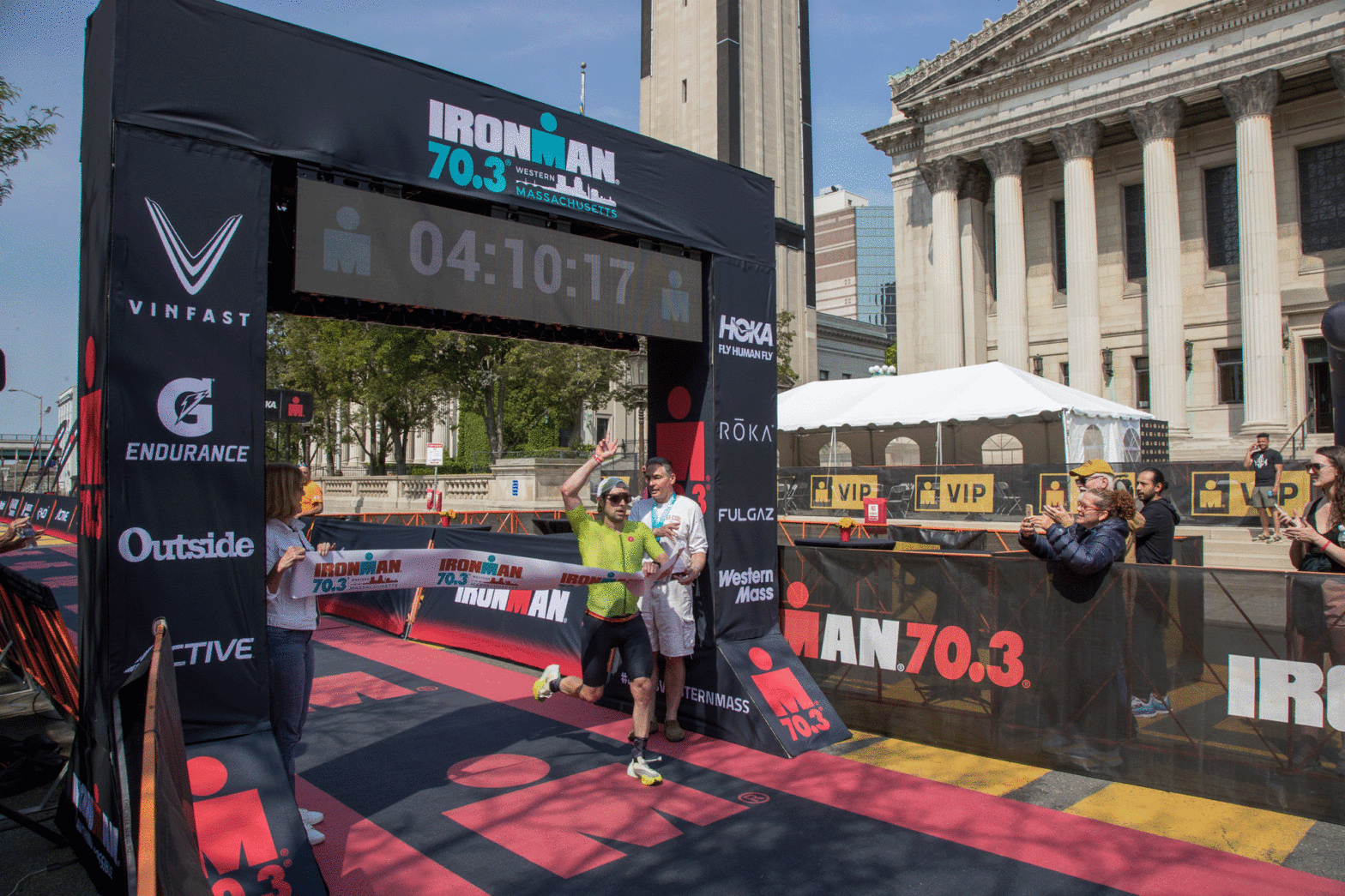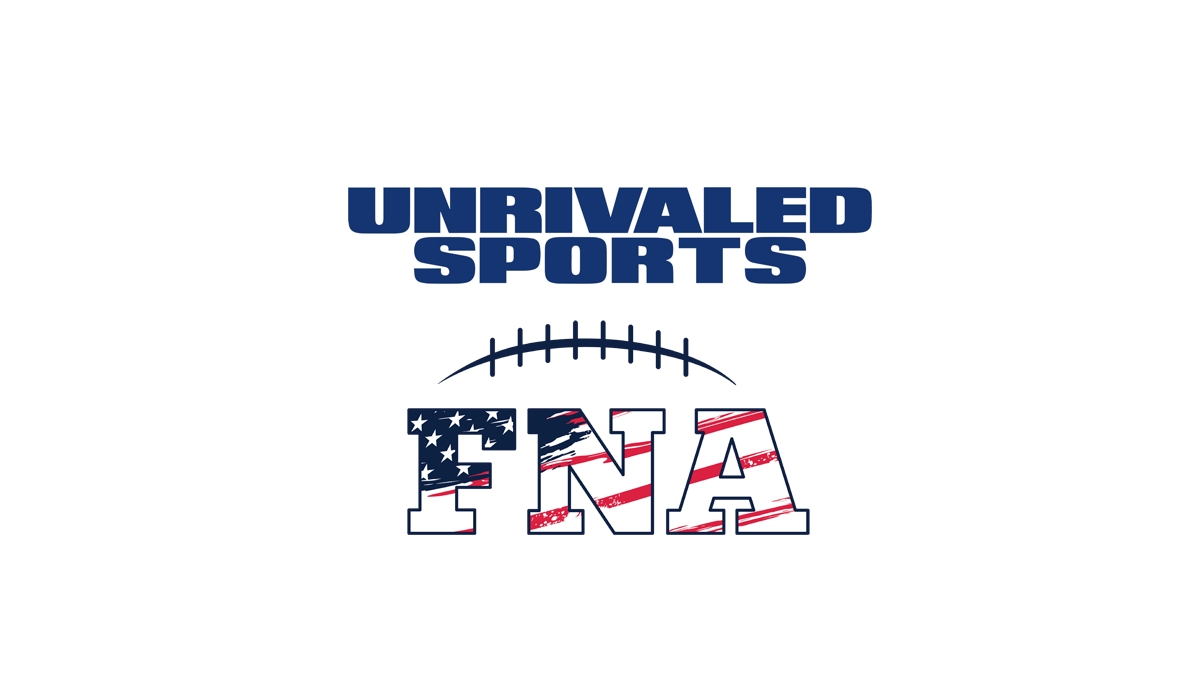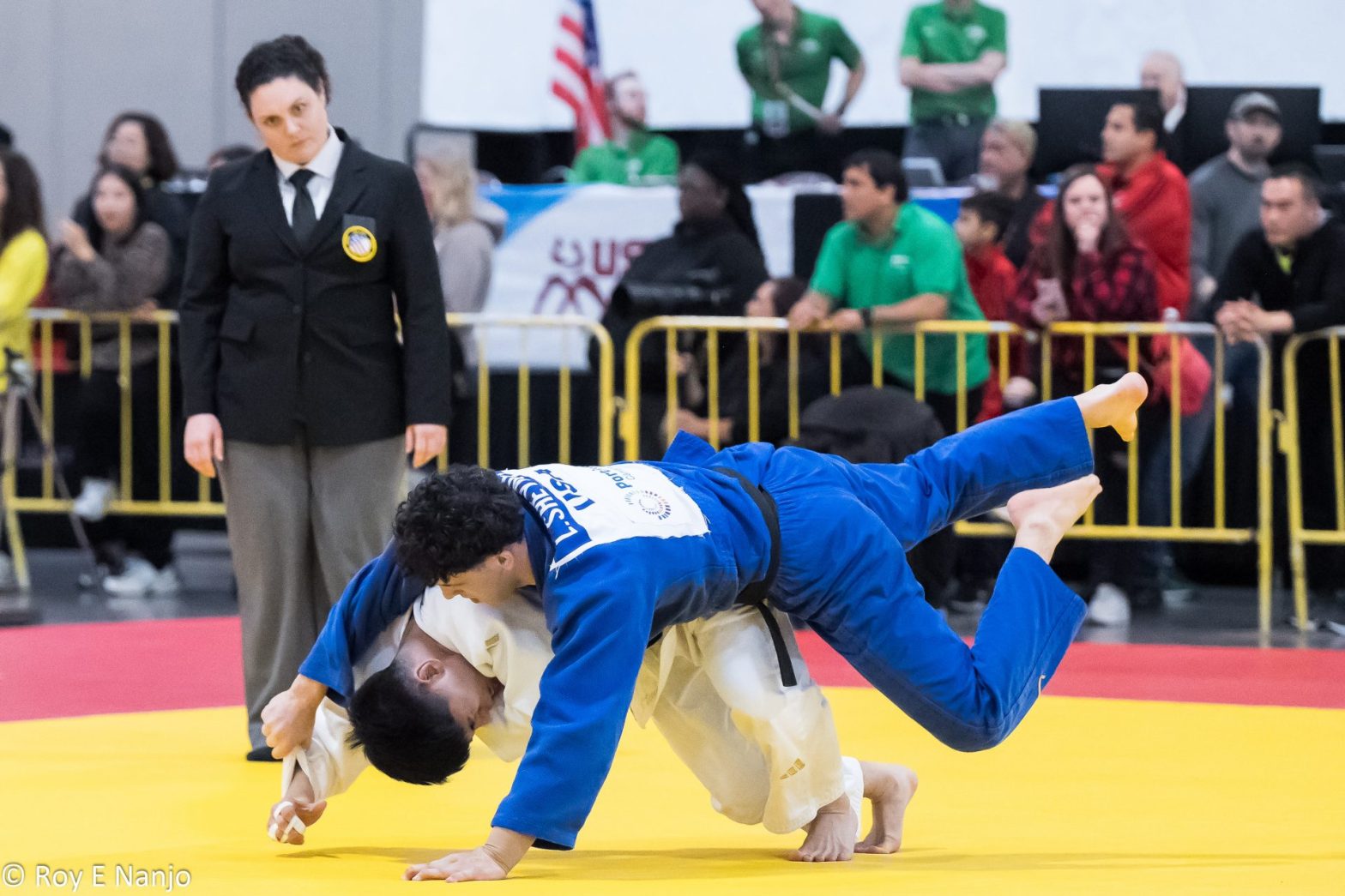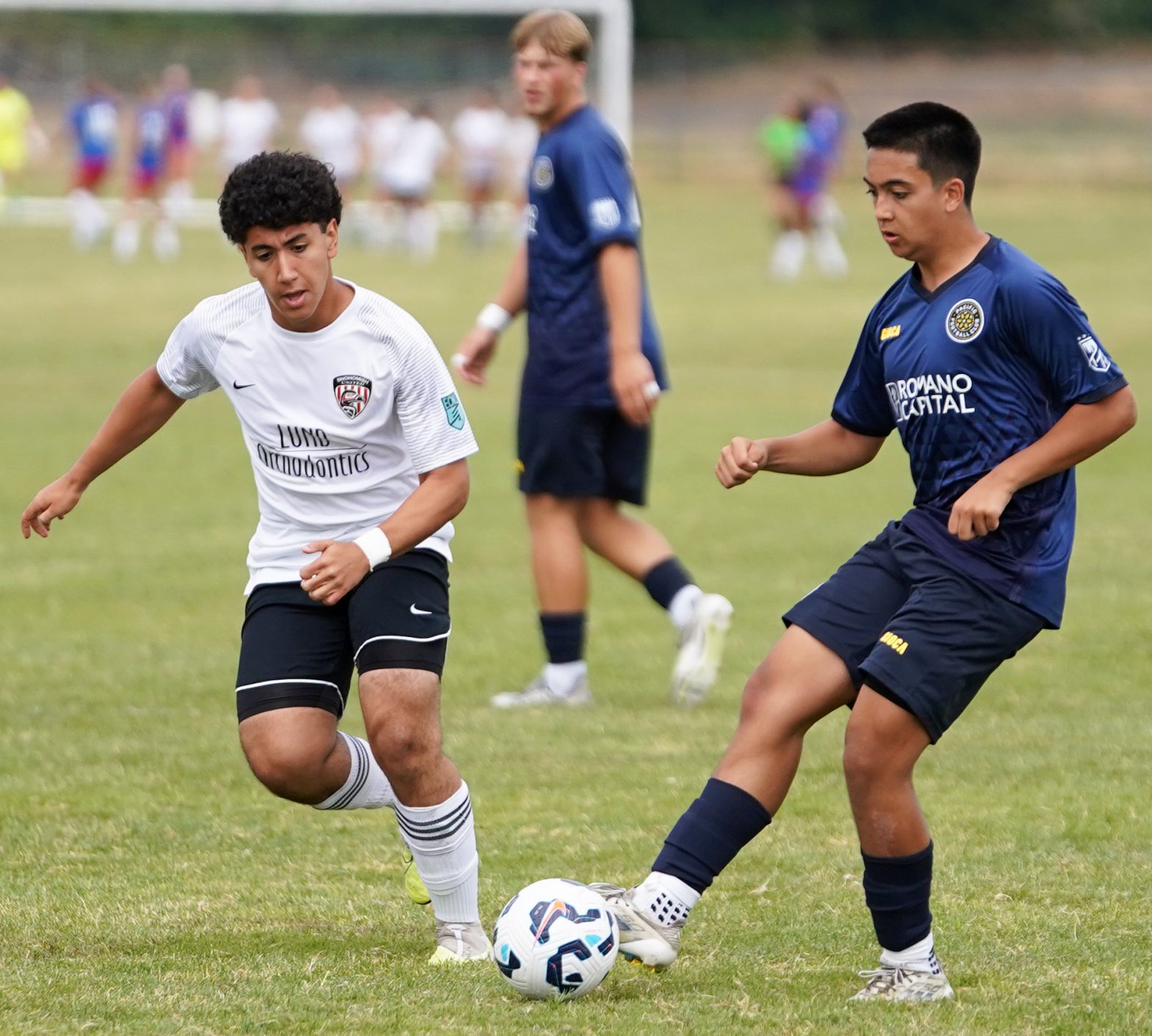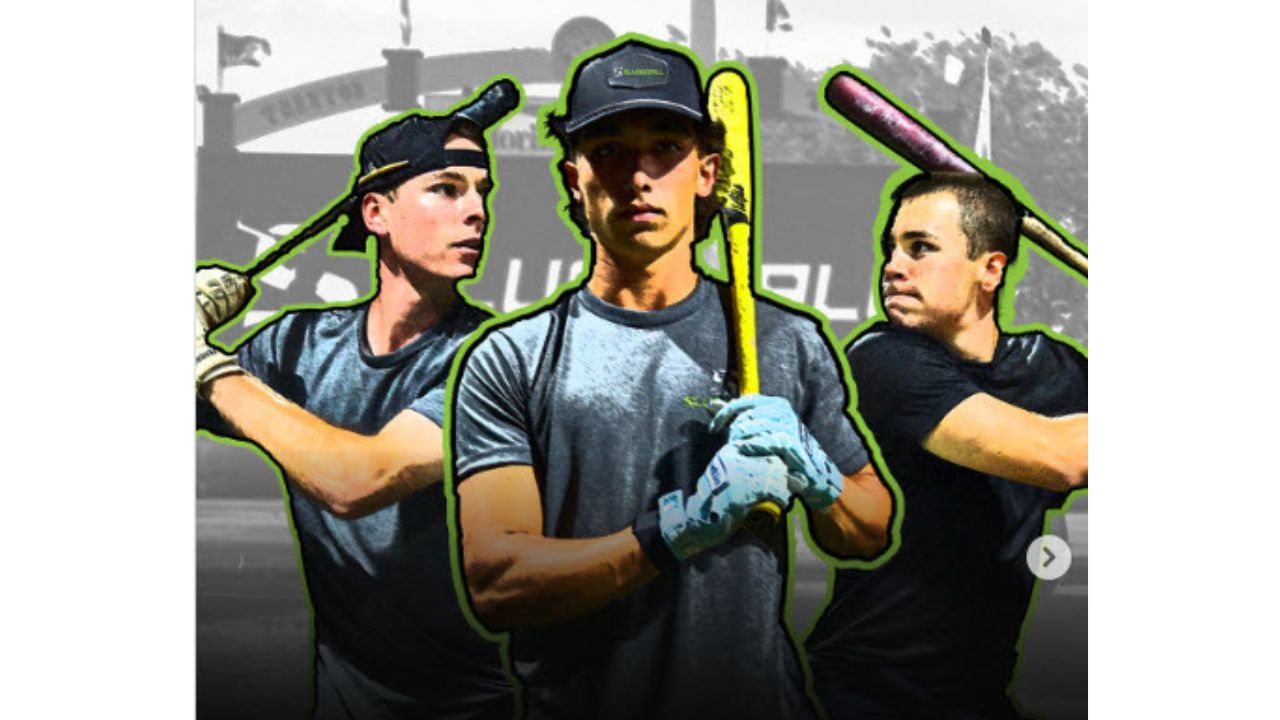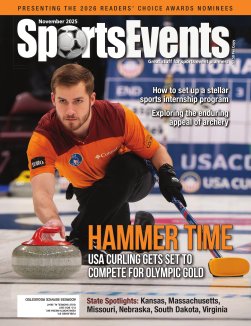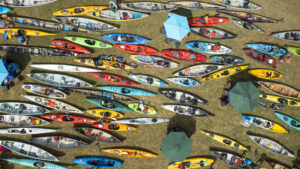
About 38 million people in the U.S. participate in paddle sports each year, making it a prime choice for competitions.
About 13.6 million of those are recreational kayakers, while canoeing draws 9.5 million; standup paddle boarding has 3.8 million participants; and sea and whitewater kayaking account for 5.3 million, according to the Outdoor Industry Association.
As the world prepares for the Paris 2024 Summer Olympics, the country’s best paddlers compete for spots on the U.S. team at the spring slalom and kayak cross trials. The American Canoe Association (ACA) owns four major national events, including those spring slalom trials and nationals, says Kaycee Maas, ACA communications manager.
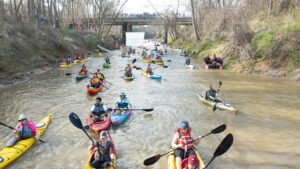
ACA—the country’s largest and oldest paddling association—has more than 15,000 members, and 300 paddling clubs and affiliated organizations. It is also the national governing body for Olympic paddle sports.
In addition to those qualifying events, hundreds of paddle races take place each year, including endurance races that pit paddlers against the elements.
One such race is the Great Alabama 650 in September, where about two dozen paddlers traverse the Alabama Scenic River Trail. Going into its sixth year, the 650-mile race starts at Weiss Lake, winds along the Coosa, Alabama, and Tensaw rivers, and ends at Fort Morgan in Mobile Bay. Participants have a total of 10 days to finish.
“You start near the Appalachian mountains. Everything changes along the way,” says race director Greg Wingo. “Rivers are pretty much flat water, but paddlers hit a whitewater section. Then you paddle the Delta—[called] America’s Amazon—and next you’re in the open bay.”
Paddlers download a GPS file that gives them a direction to follow once they hit the bay, which Wingo calls the toughest stretch. Boats hug the shoreline for much of the way, but the last 18 miles is a hard east-to-west paddle.
A unique element of this race is competitors can switch between a kayak, canoe, and standup paddle board.
The Great Alabama 650 brings attention to one of the most diverse ecological and biological parts of the nation. “It gets the word out that we have an amazing state to come paddle in,” Wingo says.
Then there are races that are sheer fun. The 15-mile Buffalo Bayou Regatta, now in its 52nd year, is billed as the country’s largest paddle race with hundreds of paddlers traveling an urban waterway through Houston, Texas.
“We expect between 400 and 500 boats,” says Trudi Smith, director of programming for the event’s host, the Buffalo Bayou Partnership.
On the 50th anniversary of the race in 2021, 575 boats participated. “We have definitely seen an increase in kayaking since 2015 with the completion of a renovation of a major 160-acre/2.3-mile waterway park near downtown, spearheaded by Buffalo Bayou Partnership,” Smith says.
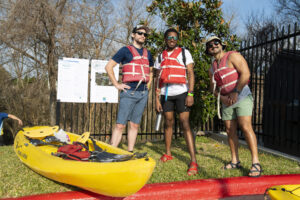
“The main priority of putting on a canoe and kayak race is safety, and having a good time is a close second,” Smith says. “It is so gratifying to see so many colorful boats in a Houston historic waterway. This is such a great way to see Houston from a completely different perspective.”
The Buffalo Bayou Partnership Regatta has a wide range of paddlers—about 75 percent are novices and 15 percent are very competitive, Smith says.
“Because we had so many novices, we created a new category of ‘non-competitive’ that helped with our timekeeper, as these paddlers were
not timed,” Smith says. “And, learning after a few years, we had the non-competitive racers go first, as these participants tended to be slower. They arrive about the same time as other paddlers and don’t miss out on the finish line festivities.”
Choosing a venue
While short races require a certain size venue, it doesn’t have to be scenic.
For Olympic sprint races, a venue ideally needs a standing body of water (such as a lake) that is 1,200 meters long and 100 meters wide with a uniform depth of at least six meters, says Maas.
An Olympic slalom course is about 300 meters with 20-25 gates on Class I-3 whitewater. Kayak cross can be shorter and only needs eight gates. Canoe and kayak competitions are timed events where competitors navigate a whitewater course by passing through a combination of gates.
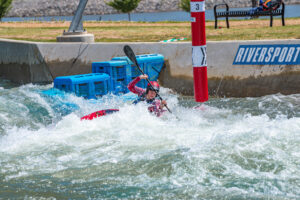
The ACA accepts bids to hosts its competitions. This year is the first time the Montgomery Whitewater Park in Alabama will host its 2024 Canoe Slalom and Kayak Cross Olympic Trials, set for April 13-14. It’s also the first selection event before this summer’s Olympics.
The second (and final) qualifying canoe slalom and kayak cross event for Olympic team selection takes place at RIVERSPORT OKC in Oklahoma City on April 26-28.
In planning a long paddling race, finding an optimal venue is goal number one, Wingo says. In addition to being the Great Alabama 650 race director, Wingo runs Roam Projects, which holds adventure races around the world.
“With this race (the Great Alabama 650), I am beholden to the Alabama River Trail,” Wingo says. “I have this stunning, epic course that makes it hard
to replicate.”
Long races need unique features to engage participants.
“The longer the race is, the more important it is to have something that makes your race stand out,” Wingo adds. “The more you need to have a hook. Will it be something people want to watch? Will it be something people want to participate in?”
Local support/volunteers
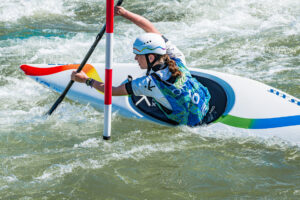
While it’s not required that a local club hosts an ACA competition, events such as sprint trials benefit from having a ready source of knowledgeable volunteers, says Maas.
However, with slalom and freestyle, many events and races take place on rivers or whitewater parks that do not have a host club. “Various sports commissions have successfully hosted events in the past,” Maas says. “Some race series have been going on for nearly 50 years on the
same river.”
The Great Alabama 650 has “a relatively small number of people putting on a very long event,” Wingo adds. A staff of five works with Wingo from the race’s start to finish. He has a dedicated chief at each open portage, and about 25 volunteers are positioned to help paddlers carry gear and boats when they portage around dams.
In addition, each boat has its crew to ensure they hit checkpoints on time and have an ample supply of food and water.
A medical person on staff monitors each paddler’s condition, and Wingo reserves the right to pull a paddler. Two spot trackers are attached to each boat. When coordinated together, they ping each boat so Wingo and his staff can pinpoint the location of any of the craft within a couple of minutes.
The Buffalo Bayou Regatta also benefits from an incredible group of volunteers who lend their expertise and time to ensure a fun and safe event, Smith says. The Regatta has team members designated as radio operators, rescue, assistance boats, and guides. In addition, the Harris County (Texas) Flood Control District assists in clearing the 15-mile route, which helps with the safety aspect of the race so participants have a continuous paddling path to the finish line.
Other tips
Smith suggests hosting a festive celebration at the end of the race. Include an area for guests to cheer on racers as they cross the finish line. The Buffalo Bayou Regatta has live music (or a DJ), food trucks, and local vendors. Wingo said it helps paddlers have supporters cheer them
on at various bridges and public parks along the route.
He also advises to have a rain plan, whether it’s an alternate weekend or a cancellation. Be prepared in case the weather doesn’t cooperate.
Make sure participants have enough water. One year, the Buffalo Bayou Regatta had a sponsor distribute water at the halfway point as paddlers passed them. Lastly, ensure there are enough restrooms or port-o-cans—and plenty of toilet paper for one last “pit stop.




